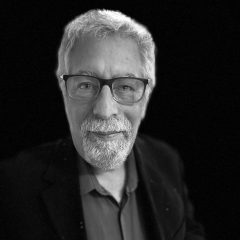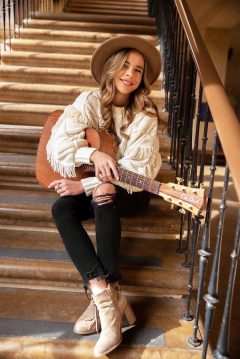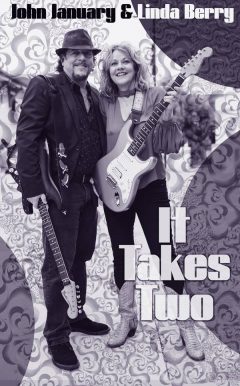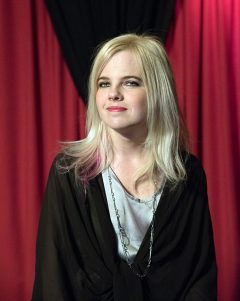Featured Stories
How Did I Get Here: My Journey into the World of Concert Photography
The question was: How did you get here? How did you make the journey from musician to concert photographer?
Thinking on that, I found that the answer actually might be more revealed in the question of who is a concert photographer? Based on my observations and friendships with fellow concert photographers, I believe the following descriptors may be used as qualifiers. Perhaps more would be apt, but these are the most common to me.
First, all of the concert photographers I know have a very deep love of not just music, but live performance specifically. Second, some of these same photographers also come from a musical background as singers, songwriters, musicians, or who are in some way involved in the music industry. Third, there is an inherent desire to support live music and the local talent in whichever city you reside and work.
Few concert photographers can make a full-time living doing this type of work. There aren’t enough full-time positions or avenues to raise enough revenue to reach that threshold. We all have lists of big-name bands, which we wish to photograph. Some of those are realistic and some not so much. In the end, most of us come back to the local music scene, where pay is low or non-existent. We get here as a result of one or more of those items listed above.
So, this is my journey of how I got here. My story is not so different than some of my fellow concert photographers, with whom I’ve become good friends with over the years.
I grew up in Chicago, Illinois. There was no music in my household when I was young. I don’t have any memories of a single instance where there was a radio or record player being used. Music first entered my life in grade school when I was about 11 or 12. During my first music class in school we could choose any instrument we wanted. I chose the accordion. I don’t remember why. Try as I may, I could not even begin to master that instrument. After giving up on that, I went through a couple of years trying to play saxophone and trombone, neither of which would stick.
And then one day the music made sense. My friends and I managed to get a hold of some portable radios and found real music. Rock ‘n’ roll music. Blues music. Only a few stations played what we really enjoyed and there was one in particular. The call sign was WVON and it was a station that mostly played blues in those days. The signal was weak, but better later at night.
We would all gather around and listen as late as we could each and every day. Some of us started to travel to Chicago’s blues clubs on the South Side. We couldn’t get in, but we were happy to hang around outside and listen. The locals there were probably laughing at a bunch of white kids hanging outside of black blues clubs, but there was always a sense of community.
Fast forward a couple of years, and here some us were in blues bands ourselves; I had finally found my instrument: drums.
Players! Sure, we were cover bands, but we were playing music. We were always players, this group. We didn’t write any music. None of us were creators. Our joy came from playing the hits and the living music of the blues.
Years went by and a few of us still remained in music. We were still players, though. Players that were now hired guns and sidemen. We were hired to play with major stars in major venues as back-up musicians. We also played for bands no one ever heard of or heard from again. In the midst of all this, life goes on. We get married, some have kids, we get real day jobs, life gets in the way of music, but the music never really leaves a musician. The players in this small group are still not creators or writers. Music is not our profession. We are players.
I moved to San Diego 19 years ago. After finding some new musicians and playing some shows, it became apparent that my day job was just too demanding—due to extreme travel—to allow for me to continue on as a musician. So, how to harness a life filled with a love of music into something not only productive, but perhaps even creative?
Photography! I’ve been a photographer of sorts since my late teens. A photographer who plays and knows music? Is that even possible? Well, I sure have an insight on performance. I surely know when to capture the right moves on stage, based on any particular song. I decided to look into the San Diego music scene from a different perspective. Immediately, I found one of the most dynamic music communities I have ever seen. This was nothing like Chicago. The depth and breadth of original, creative talent in San Diego is on a par with Nashville and Austin. One has only to be willing to go out and see it all. So, I started out in some of the smaller clubs, and my first real immersion into the San Diego music scene was when I volunteered to photograph the San Diego Independent Music Festival. I signed on, and I believe I shot every one of them except perhaps the first one. The organizers and I have been friends since that first meeting. It has been non-stop since then—from stadium shoots to small clubs and house concerts, to behind the scenes on video shoots. The music scene here in San Diego is so diverse that a concert photographer can shoot every night of the week if so desired. I also shoot concerts when I am on the road travelling… all across the country.
Through music and concert photography, I have made some amazing friendships with local musicians and singer/songwriters—a list that would fill pages. The only thing stopping me from making that list is the fear of forgetting a name and leaving someone off. I still play percussion gigs when the opportunity arises and have recently taken up bass guitar, but my real focus after all these many years in music is supporting the music scene here in San Diego. The local music community is really just one big family. I am probably the oldest of the concert photographers in this family, but I have to recognize that the next generation of up-and-coming young San Diego musicians are all awesome in their craft and dedicated to achieving their dreams. It is a real pleasure to be in a position to have a life skill that can be used to support this musical community. I shoot every week—sometimes more than is practical—but how can I not? You never know when that next jaw dropping performance will happen, and I sure don’t want to miss it.
Concert photography has its challenges, and they can be daunting. So, here are some of those challenges that have to be overcome, in no particular order, save for the most important one of all.
Always present your artist in the best possible way. Musicians and singers may be a moving subject, and facial expressions are constantly changing. Be diligent in choosing your image, to ensure you do not present the artist in awkward or unflattering ways. You are there to capture images for publication, promotion, or support, and only the very best will do.
Know your artist. Listen to their music. Study their videos. If you understand their music and have watched their performances, you can anticipate where in any given song the hook appears, which will generate a specific movement. If you know how they typically act during a performance and where they are most likely to present the opportunity to make a memorable image, you will be in the position to anticipate that moment and be ready for the money shot.
It is always better to admit defeat, rather than posting or submitting poor or bad images. It does nothing for your artist and reflects poorly on your abilities.
Know your equipment. This one could be a tie with number one. You will be faced with moving artists, constantly changing lighting scenarios, establishing your working space and interacting with paying attendees. You must be able to use your equipment in low light and a changing environment, where you may only have fleeting moments to create a quality image.
In most all instances, flash is not allowed. If you cannot utilize your equipment properly without flash, then you should not be there at all. In concert scenarios, flash will not only irritate the artists, it will most likely result in having you removed. It does not matter if paying attendees are using their phone cameras with flash. That is their issue, not yours. You are the professional.
Depending on the venue, there are other considerations. If there is a photography pit, you need to be able to interact with other photographers in a respectful way, yet still move around and establish a working space. This is no small accomplishment. If you are shooting from the crowd, things can be very different. Remember, these folks have paid to be there, while you may have free access. When moving through the crowd, always be as friendly as possible and do not remain in one place so long that you are blocking out people from enjoying the show.
Speaking of access. This is not always granted. Just because you want to shoot a show and think you can, you cannot always count on getting approvals. There are many considerations as to who gets access. It might depend on whether you apply to a venue, a band, a manager, the artist directly, or through a publication. Sometimes you may be required to present existing work if you are applying to shoot someone not familiar with you. At times it will not be an issue if you have a relationship with that entity. Access can also have restrictions. The more famous the artist, they may only grant access for the first two or three songs, and then you have to pack up and leave.
They may ask you to sign a photo release. This subject could generate a whole article of its own. Suffice it to say that they can be generous or onerous to a photographer. Always remember that under U.S. law, you as the creator hold all rights to your images. Be very aware of the possibility of giving up rights to your images just for the privilege of shooting a show. Do your research before you apply and know what your plan is. I will personally refuse to sign a release and shoot a show where there is a blatant attempt to grab the rights to my images. I will just move on to another show without those restrictions.
The music and photography scene in San Diego is overflowing with amazing artists and a core group of concert photographers who enjoy each other’s company and who work tirelessly to support, promote, and grow the creativity of all involved.
And…it is not just about us. None of this can take place without the dedication of all the music clubs, coffeehouses, house concerts hosts, various venues, promoters who book these shows, and the numerous publications that print schedules, articles, ads and everything under the sun about live performance. It is a huge community with an unbelievable amount of moving parts, all working toward the same goal.
It is always about the music. So, that is how I got here as a concert photographer. And I would wager other concert photographers have a similar journey of their own.
For more examples of Chuck’s photography, go to: chucklapinsky.smugmug.com










